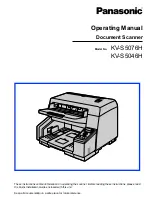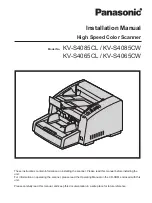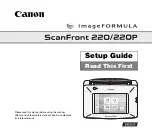
4. Technical Description
2004-11
Operating Manual for the LS Series Scanner No. 30001798 Rev. No. 1.5
4-3
4.2 Autofocus
A key element for the flexibility of the instrument is the autofocus system. It allows
every sample individually to be adjusted - exactly in the focal plane of the optics.
Because this is done immediately before each scan, out of focus images due to
long term drifts of the optical alignment are not an issue with the LS SERIES
SCANNERS.
Before each scan two z-scans are done across user defined lines in the sample.
This way two short ‘vertical’ images are recorded typically close to both ends of
the slide or the sample. (z-axis is moved instead of x-axis). These z-scan images
are taken to calculate the exact position and the orientation of the sample.
Orientation of the sample is also calculated because slight amounts of tilt could
give poor results with a confocal measurement scheme.
The sample is then brought into the exact focal plane both with regard to z as well
as the two angles of tilt. This process is fully automated. Signals are recorded in
reflection mode and with a dimmed beam (4 orders) to prevent bleaching.
To realize this functionality a high precision 5-axis transport system is
implemented in the LS SERIES SCANNERS. The five axis are: X (scan axis), Y
(moves sample tray between different slides or different areas on larger
samples), Z (brings sample into focal position),
ϑ
and
Φ
(correct for angles of tilt
of the sample or tolerances of the adapters). Precisions for the axis’ are in the
range of 1-2µm.
4.3 Data
Processing
Further data processing is done by an analog amplifier PCB and fast 16 bit data
acquisition boards. The latter ones are plugged into the PC and connected to the
instrument with a special interface cable.
An internal Main-CPU takes control of all the actuators and data acquisition steps
during scan. It is interfaced with a RS232 cable with the PC.
On the PC the Array Pro software is an integrated package both for instrument
control and for array processing.
















































